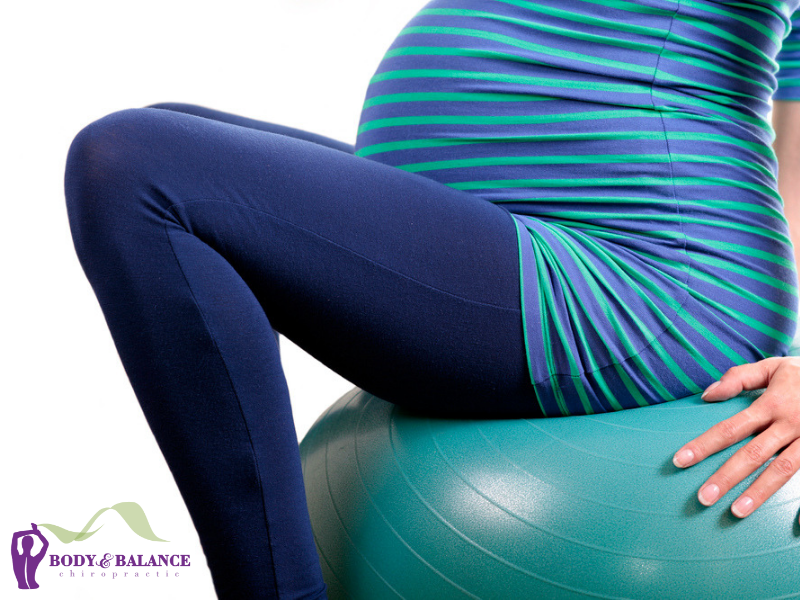When considering pregnancy or just finding out that they’re expecting, every woman wants to do whatever is best for their unborn child. Preparing their body for pregnancy and making sure that the delivery is as quick and pain-free as possible is definitely high on their list of priorities. If there is anything that can be done to avoid risks or difficulties during labor and delivery, then that’s what a soon-to-be-mom is going to do. So why is it that so few women have heard of the “pelvic floor”?
What is the Pelvic Floor?
The pelvic floor refers to a group of muscles that attaches to the pelvic bones and sacrum. Acting almost like a sling or hammock they support the organs in the pelvis. It is unique in that the pelvic floor is the only horizontal load-bearing muscle group in the body.
Both men and women have a pelvic floor. In men, the muscles, tissues and nerves of the pelvic floor support the bladder, prostate, rectum and seminal vesicles. In women, the muscles, ligaments, connective tissues and nerves that make up the pelvic floor support the bladder, uterus, vagina and rectum.
Contracting or relaxing these muscles controls the functions of the bladder and bowels. Unfortunately, in many cases, the pelvic floor does not work as well as it should. According to a study funded by the National Institute of Health, about 25% of all women deal with some kind of pelvic floor dysfunction. Pelvic floor disorders affect about 10% of women ages 20 to 39, over 25% of women ages 40 to 59, over 35% of women between the ages of 60 to 79, and over half of women over the age of 80 years.
Pelvic Floor Dysfunction
Dysfunction or disorders occur when this group of muscles become weakened or damaged. Typical pelvic floor problems will fall under three general areas: urinary incontinence, fecal incontinence or pelvic organ prolapse.
While many women will have symptoms, most will not seek assistance; tolerating these problems (often for years) due to embarrassment or a total unawareness that there is anything that can be done to address these issues.
The most common symptoms include urinary problems such as an urgent need to urinate, painful urination or an incomplete emptying of the bladder when urinating; constipation, straining or pain during bowel movements; unexplained pain in the lower back, pelvis, genitals or rectum; pain or pressure in the vagina or rectum; a heavy feeling in the pelvis or a bulge in the vagina or rectum; painful intercourse for women; or muscle spasms in the pelvis.
Causes of Pelvic Floor Dysfunction
The most common cause of pelvic floor weakness is childbirth. However, being overweight or having pelvic surgery or repeated heavy lifting can also have a negative impact.
A recent study published in Women’s Health found that it isn’t just childbirth that causes pelvic floor dysfunction or disorders, but medical interventions or inaction may increase the likelihood of future issues. The literature suggests that there is a strong association between vaginal delivery interventions and both stress urinary incontinence and prolapse. Studies have shown that certain obstetrical exposures may be more traumatic to the pelvic floor, particularly forceps delivery or a prolonged second stage of labor and sphincter lacerations.
While there are potential risk factors that can’t be modified, such as the mother’s age or a baby being head down but facing the wrong way, it is possible to avoid pelvic floor disorders following pregnancy by avoiding the use of forceps and decreasing the time spent in the second stage of labor.
Avoiding Pelvic Floor Damage
Obstetricians and midwives always recommend pregnant women do Kegel exercises during pregnancy to strengthen their pelvic muscles. What they don’t typically mention is that those “pelvic muscles” are the pelvic floor and, obviously, preparing the body for pregnancy is going to help avoid pelvic floor damage.
Many women report back that regular chiropractic adjustments during pregnancy lead to a more quality labor and delivery with minimal intervention needed and fewer incidences of dystocia. Since medical interventions and fetal malposition are the most common causes of pelvic floor disorders, it’s clear that regular chiropractic care may be a preventative measure.
Pelvic Floor Exercises
Due to the importance of the pelvic floor during both pregnancy and delivery, it’s wise to prepare for pregnancy. As with any muscle or groups of muscles, exercises and stretching will be beneficial.
As was previously mentioned, Kegel exercises are recommended by all birthing professionals, To do Kegels, pretend that you are trying to stop the flow of urine and not allow gas to pass. This is contracting the muscles of the pelvic floor. When doing Kegels, it’s important not to move the leg, buttocks or abdominal muscles, It is normal to feel a little tightening of the lower abdominal muscles, but you shouldn’t feel anything above the belly button if performing Kegels correctly. Each time you contract the muscles of the pelvic floor, hold for a slow count of five then relax for a slow count of 5. Most medical professionals will recommend you do a set of 10 of these three times a day.
The pelvic tilt is done on all fours and strengthens the abdominal muscles and eases back pain during pregnancy and labor. On your hands and knees with your arms shoulder-width apart and your knees hip-width apart, keep your arms straight and, as you breathe in, tighten your abdominal muscles, tuck your buttocks under and round your back. Then relax back into a neutral position as you breath out.
While squatting isn’t exactly elegant, it will strengthen the thighs and help open the pelvis in preparation for delivery. Be sure to use a chair for support and, as you contract your abdominal muscles and lift your chest, lower your tailbone toward the floor as though sitting on a chair. Be sure to find a healthy balance with the majority of your weight on your heels.
The Chiropractic Factor
For a woman in labor, being able to contract or relax the pelvic floor is vitally important to allow the baby to move through the birth canal, especially when crowning. Since the pelvis and sacrum are the base of the spine and connected to the pelvic floor, it makes sense that sacral subluxations would have an adverse effect.
A study published in the Journal of Manipulative and Physiologic Therapeutics has demonstrated that adjusting pregnant women appears to relax the pelvic floor muscles. Since the pelvic floor has such an active role in pregnancy and childbirth as well as spinal stabilization, when they are damaged, health issues like incontinence and vaginal prolapses can happen.
When asked about the results, Heidi Haavik, DC, PhD, said, “…what was really interesting is that the actual (hiatus) hole itself got larger at rest. What it suggests is that those muscles that form the Pelvic Floor rim, that holds all our internal organs, and that move to give birth to the baby, just have relaxed (after the adjustment).”
To learn more about the benefits of chiropractic care and the benefits of making it part of your family’s wellness lifestyle click below to schedule a complimentary consultation with Dr. Elyssa today.



